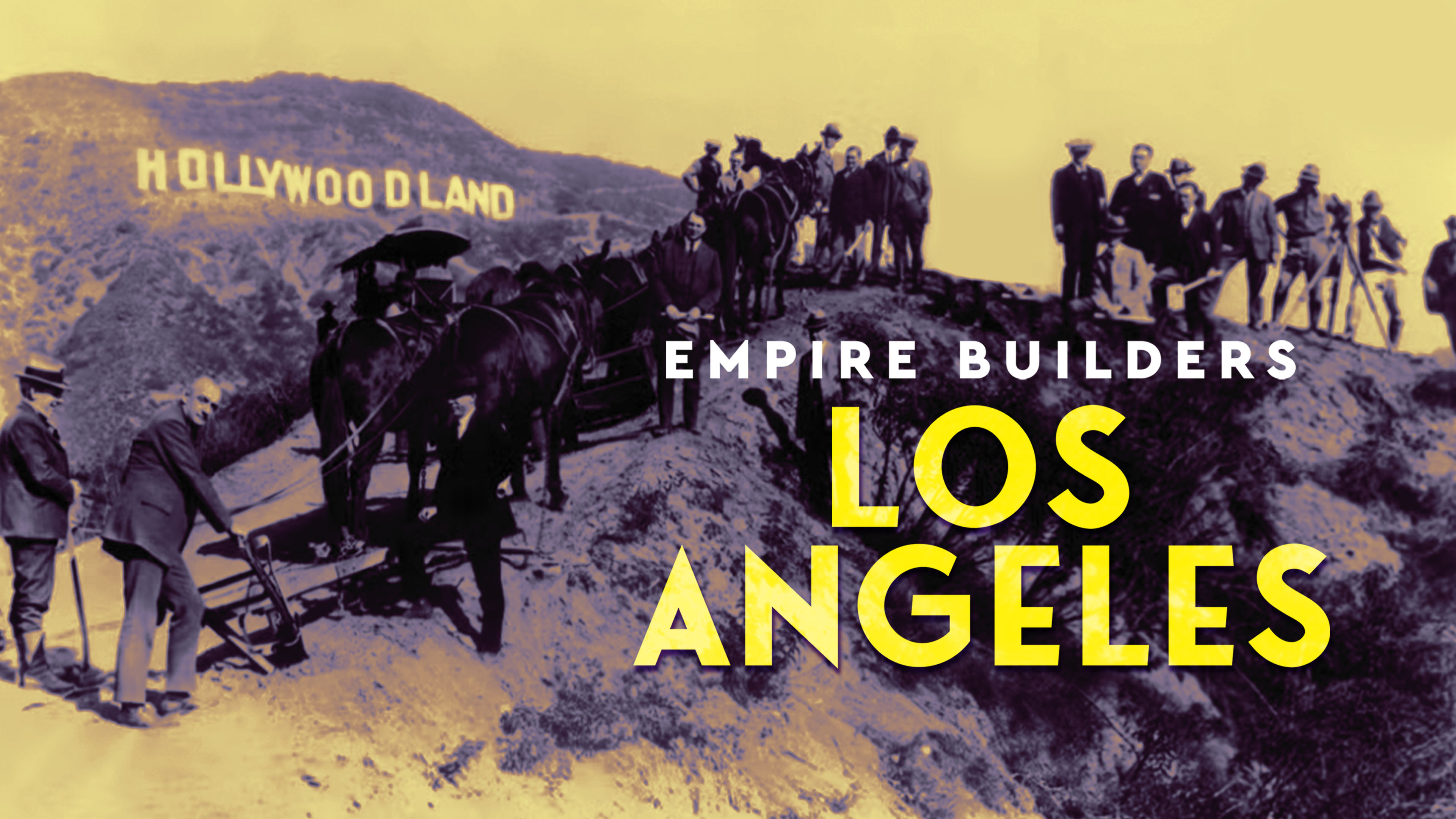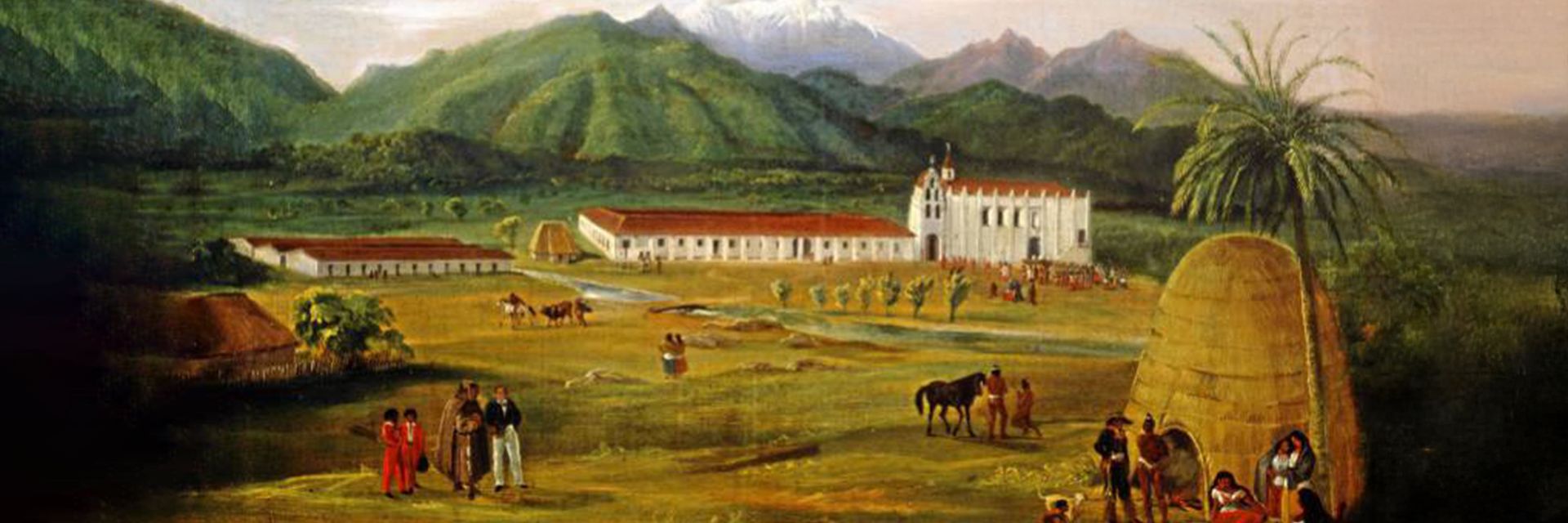Empire Builders: Los Angeles explores the city’s history from its Indigenous origins to the present. It’s an engaging and insightful look at a city of reinvention, resilience, and opportunity.
◊
What do you think about when you think about Los Angeles? Is it the golden promise of Hollywood, with stars embedded into sidewalks; the sprawling metropolis of skyscrapers and freeways, never-ending highways that lift you above and around the city? Or is it something more complex, let’s say, the deep and startling darkness embodied in “L.A. noir” histories as conceived by Raymond Chandler, James M. Cain, and Walter Mosley?
Los Angeles is often seen as a city of reinvention, a land of opportunity, but it is also a place shaped by cultural collisions, resource exploitation, and shifting identities. If you’re interested in a deep dive into an unvarnished account of the city’s evolution, then Empire Builders: Los Angeles, premiering on MagellanTV on April 24, is a documentary you won’t want to miss.

A Land of Constant Reinvention: Los Angeles Through the Years
Empire Builders: Los Angeles is a two-part film that provides an exhaustive yet compelling city history. The film traces the region’s development from before the arrival of Spanish conquistadors to the present day, offering a balanced, informed narrative. Among its strengths is its commitment to showcasing the diverse waves of people who have shaped Los Angeles over the centuries. The film’s even-handed approach ensures that each era is presented in vivid detail, bringing L.A.’s extraordinary history into sharp focus.
It begins by giving long-overdue attention to the Indigenous tribes that originally inhabited the land, examining in particular the devastating impact of European colonization. The film takes a candid approach in detailing how the Spanish settlers imposed their rule through conquest, conversion to Catholicism, and systematic oppression.
The documentary then transitions into the period of Americanization, marked by the U.S.-Mexican War and California’s subsequent statehood in 1850. The filmmakers illustrate how this shift led to cultural upheaval, as different groups vied for influence and power in the rapidly changing region. A recurring theme in the film is how seekers and strivers saw the city as a blank canvas for new beginnings. This perspective is reinforced through the examination of key figures such as Henry Huntington, Edward Doheny, and William Mulholland, who sought to impose European and Eastern U.S. cultural norms onto the burgeoning metropolis (along with a not-insubstantial amount of greed and larceny).
.jpg) “Beautiful Westlake Park” tinted photograph, c. 1930-45 (Source: Boston Public Library Tichnor Brothers Collection, via Wikimedia Commons)
“Beautiful Westlake Park” tinted photograph, c. 1930-45 (Source: Boston Public Library Tichnor Brothers Collection, via Wikimedia Commons)
Another strength of Empire Builders: Los Angeles is its nuanced portrayal of the city’s ever-evolving population. The film demonstrates how each successive influx of newcomers brought with it fresh ethnic and social dynamics, from the Portuguese and Spanish settlers of the early 1800s to Black migrants seeking freedom from the American South, and later waves of Chinese, Japanese, Jewish, and Latin American immigrants, among others. This ongoing arrival of diverse peoples has defined Los Angeles as a city of aspiration and cultural fusion.
The film details the rise of the Hollywood film industry as well as the aviation and defense sectors that propelled Los Angeles into the global spotlight in the 20th century. Importantly, Empire Builders: Los Angeles does not shy away from the city’s darker historical moments, such as the relocation of Japanese Americans from L.A. to internment camps during World War II and the racial tensions exemplified by the 1943 Zoot Suit Riots. By addressing the numerous complex quandaries of the recent past with honesty, the film avoids the trap of whitewashing history.
Empire Builders: Los Angeles is a fascinating and well-rounded portrait of a city that has always been defined by reinvention, resilience, and diversity. Anyone with an interest in history, culture, or urban development will find this documentary both enlightening and enjoyable.
Ω
Kevin Martin is Senior Writer and Associate Editor for MagellanTV. A journalist and communications specialist for many years, he writes on various topics, including Art and Culture, Current History, and Space and Astronomy. He is the co-editor of My Body Is Paper: Stories and Poems by Gil Cuadros (City Lights) and resides in Glendale, California.
Title Image: Painting of Mission San Gabriel by Ferdinand Deppe (1832) (Source: California Missions Resource Center, via Wikimedia Commons)

